introduction
National Semiconductor Lighting Engineering R&D and Industry Alliance Industry Research Institute CSA Research said that in 2017, small-pitch display, automotive LED, mobile phone LED flashlight and other market segments were concerned; bio-agriculture lighting, light medical, communication, security, sterilization and other innovations Applications will be the new growth point and long-term growth engine after the replacement phase. As semiconductor lighting matures, the market is gradually being subdivided. Different from the lighting market is UVLED. Today, when the industry has just grown, UVLED special lighting was born, and its application has a professional subdivision.
First, the application of subdivision
UVLED wavelength range
UVA wavelength is 320-390nm, also known as long-wave black spot effect ultraviolet light. It has a strong penetrating power and can penetrate most transparent glass and plastic. The 360 ​​nm wavelength UVA ultraviolet light conforms to the phototaxis reaction curve of insects, and can be used to make trap light. UV-AUV at a wavelength of 300-420 nm can pass through a special colored glass tube that completely cuts off visible light, and emits only near-ultraviolet light centered at 365 nm. It can be used in ore identification, stage decoration, banknote verification and other places.
UVB wavelength is 280-320nm, also known as medium wave erythema effect ultraviolet light. UVB UV has an erythema effect on the human body, which can promote mineral metabolism and vitamin D formation in the body, but long-term or excessive exposure will cause the skin to tan, and cause redness and peeling.
The UVC wavelength is below 280 nm, also known as short-wave sterilization UV. It has the weakest penetration and cannot penetrate most of the transparent glass and plastic. The short-wave ultraviolet rays contained in sunlight are almost completely absorbed by the ozone layer. Short-wave ultraviolet rays are very harmful to the human body. Short-term exposure can burn the skin, and long-term or high-intensity exposure can also cause skin cancer. Ultraviolet germicidal lamps emit UVC short-wave ultraviolet rays, which can destroy the RNA and DNA structure of microorganisms such as bacteria and spores, thereby inhibiting bacteria and bactericidal action.
It can be seen that depending on the frequency band, UVLED can be applied in many fields, but it is also subdivided into various professional fields by various applications.
UV identification, barcode (230-280nm)
Surface area water sterilization (240-280nm)
Identification and body fluid detection and analysis (250-405nm)
Protein analysis and drug discovery (270-300nm)
Medical phototherapy (300-320nm)
Polymer and ink printing (300-365nm)
Identification (375-395nm)
Surface sterilization / cosmetic sterilization (390-410nm)
Plant growth (275 ~ 320nm) and so on.
Second, the integration of professional knowledge
This is because the application of UVLED is subdivided by various professional fields. Because the application in various fields is very professional, it is necessary for the practitioners of UVLED to have a strong accumulation of expertise in each application. Limited to a small area of ​​UVLED packaging, we must actively understand the downstream use characteristics, use conditions, and application requirements.
1.1 UVLED application in the field of curing
In the field of curing applications for industrial applications, the requirements can be classified as: high efficiency, high speed, and stability.
For the definition of high efficiency, it does not only refer to the advantages of UVLED in energy saving compared with traditional mercury lamps, and the ratio of UVLED in spectral purity and photoelectric conversion efficiency. Practitioners in the field of UVLED curing must consider the final energy efficiency of the system.
High speed: In the fields of business printing, label printing, etc., in order to replace the traditional UV curing, one of the standards for measuring the light source is speed. For example, in the field of label printing, the speed generally requires 100m/min, and the UVLED can only achieve this in speed. The standard allows customers to replace applications without discrimination.
Stable: In industrial applications, there are hard requirements for UVLED stability (optical power output, heat dissipation, life, etc.). Due to the high speed requirements in the field of UV curing, the stability requirements of UVLEDs are particularly prominent because UVLEDs often fail. Will bring great economic and time loss to customers.
1.2 Expertise
Polymer chemistry
In the field of curing, as a system, it can adapt to a variety of glue curing, ink curing process. The first issue to consider is the choice of the UVLED band, and the choice of band is technically dependent on the absorption window of the initiator contained in the corresponding ink. I don't know the UVLED energy required by the photoinitiator, blindly over-supply. This method not only wastes energy, but also causes negative effects of excessive curing, such as explosion polymerization and anti-curing reaction.
As a replacement, what are the differences between traditional heat curing inks, UV curing inks, and UVLED curing inks?
What is the effect of the amount of initiator added and the type of addition on print quality (color, binding, weather resistance)?
What is the effect of the solvent (water, organic solvent or solvent-free) present in the ink on print quality and the environment?
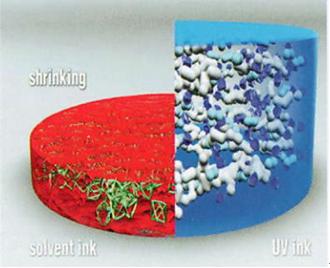
Figure 1 Difference between heat curing ink and UV ink curing
Figure 1 shows a schematic diagram showing the difference in the trade between conventional heat-cured inks and UV-curable inks. The biggest difference is that there is a large amount of organic solvent in the heat-curable ink, and the volume shrinkage after curing is very large, unlike UV. There is no large volume change after the ink cures, which will greatly reduce VOC emissions.
2. Optics, thermals
In the field of UVLED curing, it is generally a directional application, especially for the UVLED offset market. For the field of UVLED sterilization and air purification lamps, a wide angle is required. Therefore, the products required in different application fields are different.
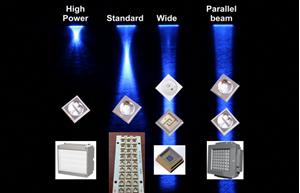
Figure 2 Example of different light patterns
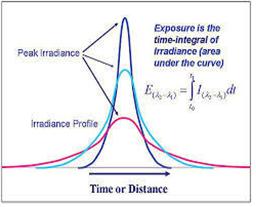
Figure 3 Effect of time/distance on illumination intensity
UV LEDs for industrial applications generally use active heat dissipation, and their power is several kilowatts. This is especially true for heat management. If the heat is not good, the UVLED is prone to attenuation or even failure.
If the heat generated during the operation of the LED chip cannot be dissipated in time, the junction temperature of the chip will rise sharply. As the junction temperature rises, the forward voltage drop of the LED chip decreases, the light color shifts to the red wavelength, the luminous efficiency decreases, and the thermal efficiency and reliability of the LED may be affected due to the generation of thermal stress. For low-power UV-LEDs, the power is small, the heat is not large, and the heat dissipation problem does not matter. For high-power UV-LED packages, in order to improve the light intensity, an array module is generally required. Due to the high-density integration of the light-emitting chip and the high temperature on the heat-dissipating substrate, it is necessary to use a substrate material with high thermal conductivity and a suitable packaging process to reduce the thermal resistance of the package, and to manage extremely high in a very small LED package structure. Heat.
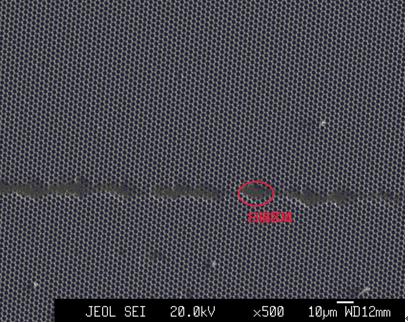
Figure 4 UV LED failure diagram
3. Gem identification
Another application for UV LEDs is gem identification, for example:
1) Help identify gemstone varieties: Some gemstones with strong fluorescence have identification significance, such as red fluorescence in rubies.
2) Help distinguish between certain natural gemstones and synthetic gemstones: as most natural sapphires are non-fluorescent, the sapphire synthesized by Werner Leaf method is fluorescent.
3) Help distinguish between certain natural gemstones and artificially treated gemstones: if the jadeite is fluorescent, it will illuminate as a whole. When some acid-treated jade is filled with glue, the filling glue is fluorescent. Emerald luminescence, the overall illuminating is natural jade; the partial illuminating is injected with jade.
4) Help to identify diamonds and imitations: the color and intensity of diamond fluorescence vary greatly, and can display different colors, blue, green, yellow, and pink; the intensity can be strong, medium, weak, and non-existent. Diamond identification has meaning. The imitation diamond material emits uniform fluorescence when it is grouped. The fluorescent character of diamonds also helps distinguish between natural and synthetic diamonds. 1 source UV.SIS
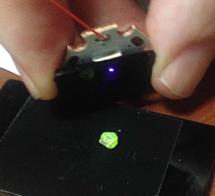
Figure 5 UVLED for gem identification
4. Biology
So far, there have been few systematic experiments on the effects of different biological time of microorganisms on the ultraviolet bactericidal effect. Some experimental studies on ultraviolet air sterilization have found that the nighttime (no visible light) ultraviolet air sterilization effect is better than daytime (under visible light). This is because of the different biological time, the "photoreactivation enzyme" in bacteria has different biological effects. During the daytime, the "photoreactivation enzyme" in the bacteria gains energy, repairs the damaged DNA, and can form a monomeric bacteria to restore life. However, at night, "photoreactivation enzyme" can not occur this biological effect. For the top ten bacteria
Table 1 Sterilization effect of different bacteria (280nm)
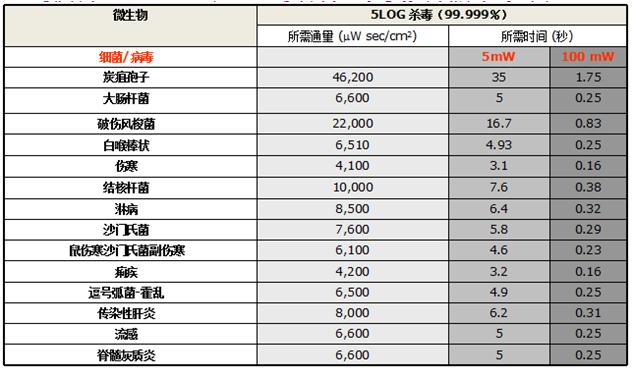
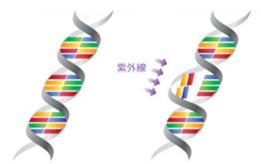
Figure 6 Schematic diagram of UVC LED sterilization
For UV sterilization, the most effective band is 260-280nm, as shown in the figure below: The most effective band is around 265nm. The 280nm ultraviolet light also has a bactericidal effect, and the following figure compares the bactericidal effect of ultraviolet rays on the E. coli in the 265nm/285nm band.
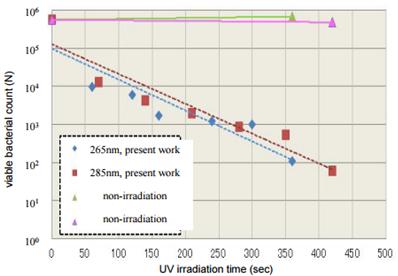
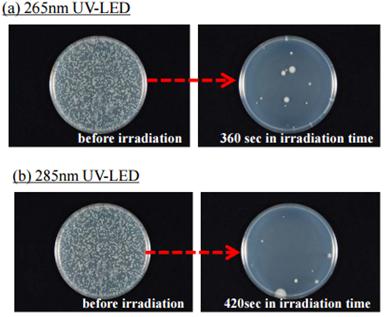
Figure 7 265nm/285nm UV sterilization effect comparison 2 from NIKKISO
(265nm--1.33mW/cm2 285nm--2.41mw/cm2 Irradiation distance: 10mm)
It can be seen that 265nm and 285nm can also achieve high-efficiency bactericidal effect, the difference is the requirement of energy intensity and the requirement of irradiation time. In practical applications, the bactericidal effect is also affected by a number of factors such as water temperature and water quality.
All in all, the prospects for the UV LED market are promising, and the application areas are more professional, as the professional market is subdivided. To make a difference in the application market of UV LED, it is necessary to have relatively professional knowledge to support the application, and to have strong resource integration capabilities.
At the beginning of the Guangya Exhibition, Hongli Bingyi, a subsidiary of Hongli Zhihui Group, will bring the all-inorganic UV LED package series products to the A0.2 Hall 10.2. Hongli Bingyi is the first manufacturer in China to introduce all-inorganic package UV LED. Based on CMH technology platform, it is committed to research and development and production of stable and efficient UV LED packaging products. The company's products have been widely used in offset printing, screen printing and gravure printing. , UV exposure, UV paint, air purification, sterilization, 3D printing and other fields. With innovative and leading UV LED R&D technology, Hongli Bingyi fully supports customers in the field of curing and sterilization.
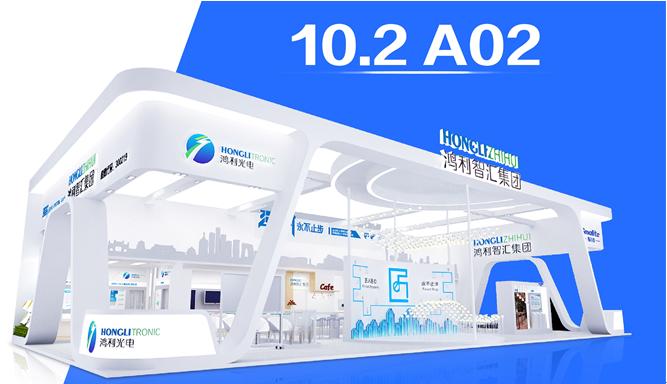

Portable Battery ,Portable Power Bank,Portable Battery Pack,Portable Power Pack
Zhejiang Casnovo Materials Co., Ltd. , https://www.casnovonewenergy.com